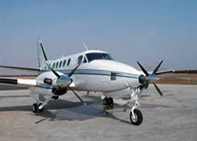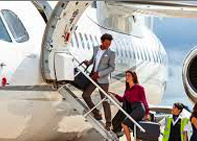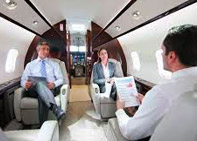A little bit of turbulence is enough to cause someone nervous about flying to go into a full-blown panic attack. A more in-depth look, however, shows that turbulence is mainly all bark and no bite.
Flying can be an inherently scary prospect. It’s easy to feel claustrophobic and weary of strange sounds; being packed like sardines into what is essentially a giant metal box doesn’t help either. Add a lack of control to the mix, and turbulence can seem utterly terrifying.
What is turbulence?
Turbulence is irregular up and down movements in air currents, caused by pockets of air moving at different speeds. Differences in air temperatures develop high and low pressure; air moves away from high-pressure areas and low-pressure regions. This can cause vortexes to form, and when our planes fly through them, we experience turbulence.
Why does it seem scary?
Well, turbulence isn’t a pleasant experience. The plane may seem like it moves from side to side, shuddering or, perhaps, the scariest feeling when it drops. These sensations, coupled with other stress triggers (large crowds, stale air, and lack of general mobility), can be a significant turbulence anxiety source.
Should I really be scared?
No, because air travel is the safest mode of transportation in the world. Your car ride to the airport was more dangerous than your flight. All commercial aircraft are designed to withstand a much higher degree of turbulence than they will ever experience. Here is a clip of the Boeing 777 resisting 150% more stress than the most potent forces it would encounter.
That’s great, but I’m reading this on a turbulent flight.
Remember that anxiety is a trickster; it can make you feel endangered even if you are perfectly safe, so fight what the anxiety tells you to do. Distract yourself; watch the in-flight movie even if it’s terrible, peruse the SkyMall catalogue, or listen to soothing music.
What can I do before the flight?
It is essential to develop healthy coping mechanisms when you aren’t flying to use them properly. Practice breathing exercises and meditation to help relax you. Visualize successfully coping with what you are afraid of and write down words of comfort on a small note; these can be anything, from what you know about the safety of planes, memories from the last successful flight you took, or even simple words of reassurance. Lastly, try to avoid consuming caffeine or alcohol before and during the flight.
Turbulence may cause some discomfort, but, hey, nothing in life comes without a few bumps along the way.








Leave a Reply
You must be logged in to post a comment.